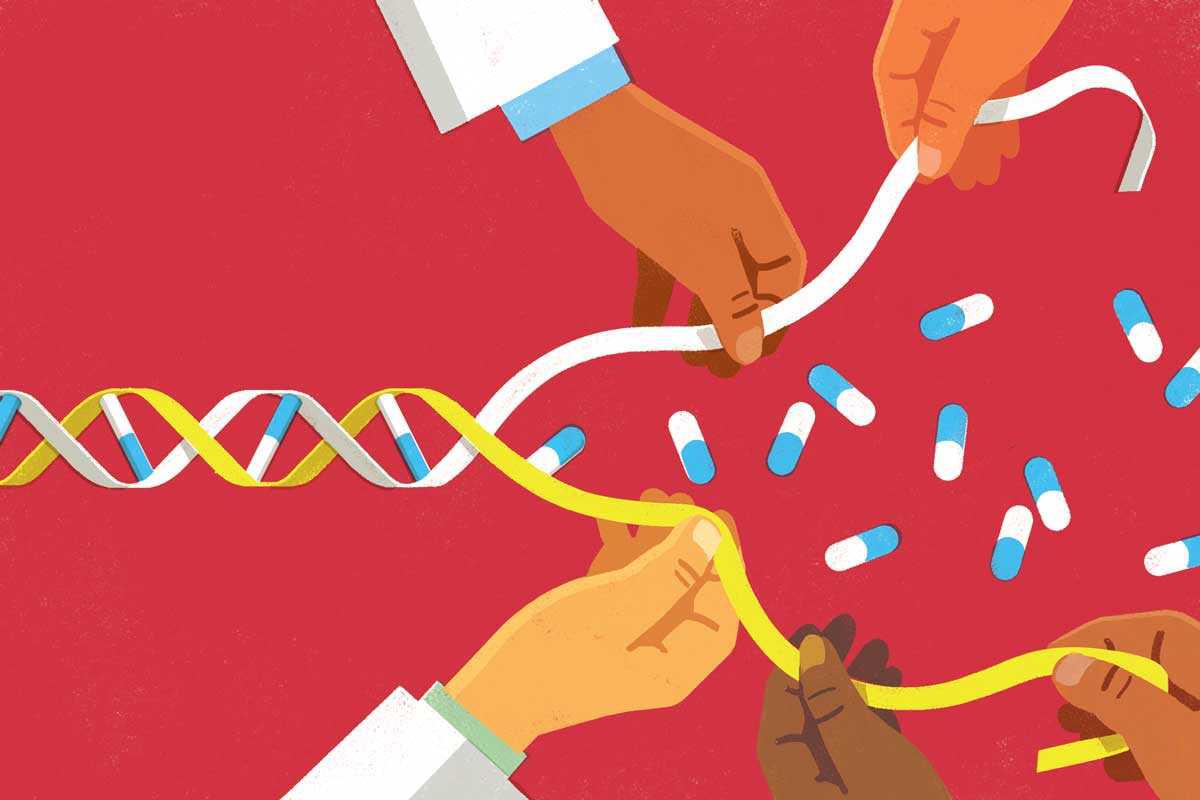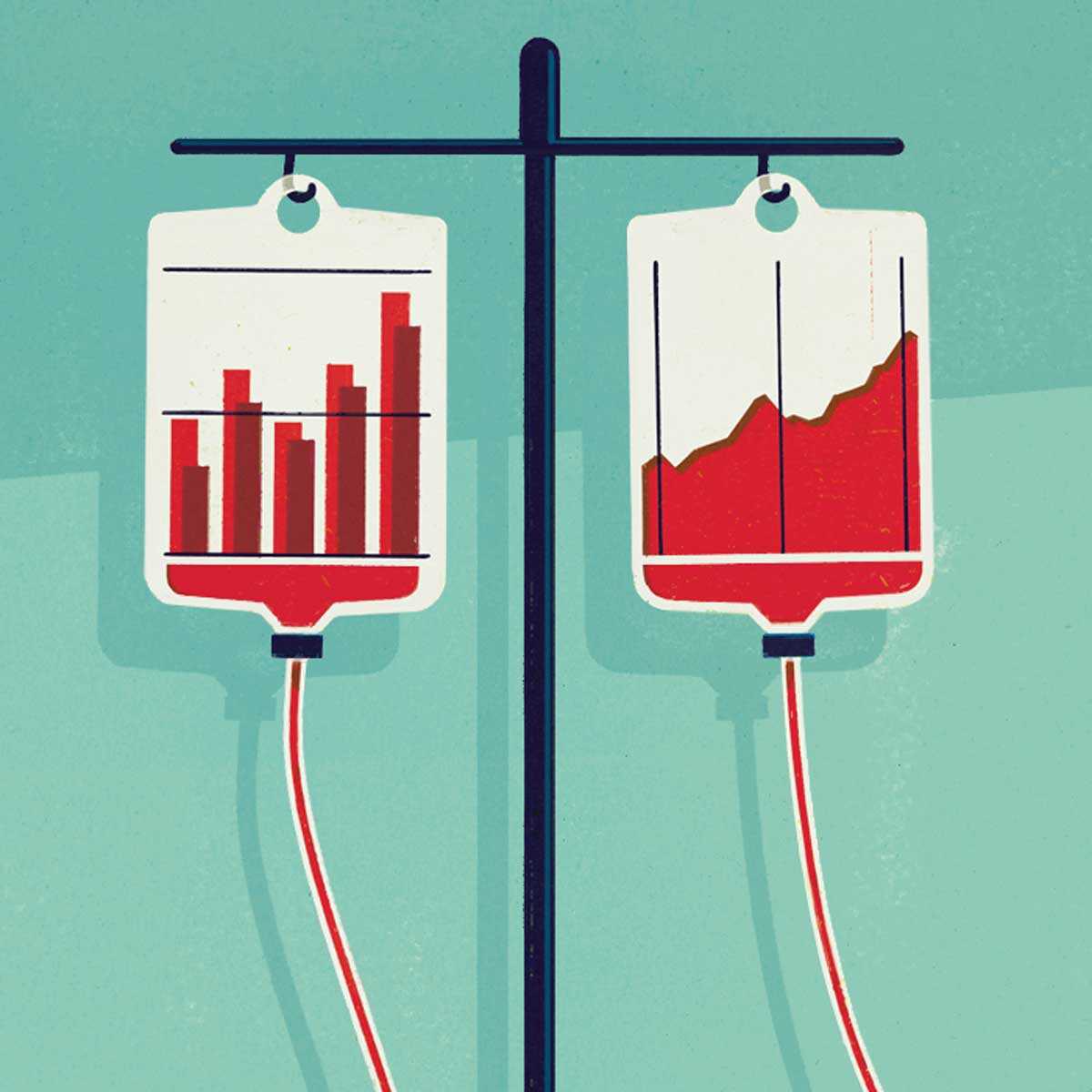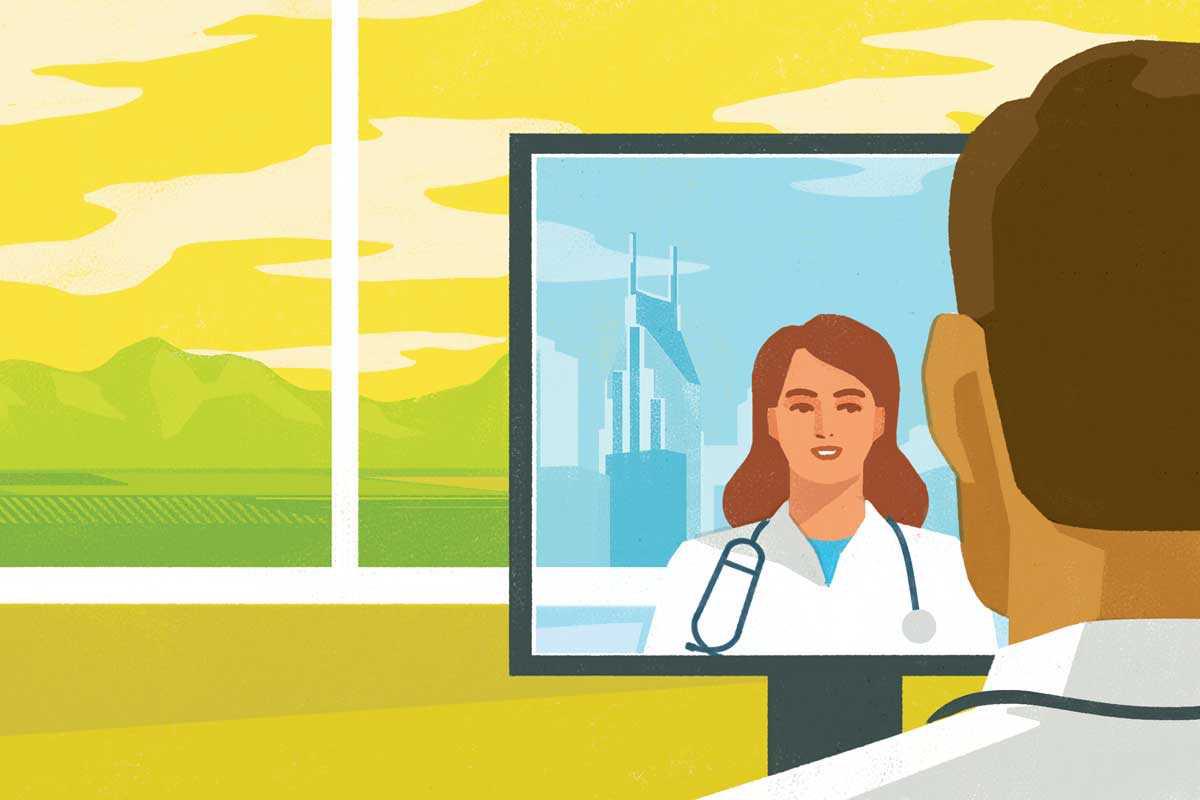The Subtle Art of Healthcare Illustrations
C/A contributor and conceptual illustrator Chris Gash on his design process, his best work and why illustrations are such a good fit for health and medical content.

We know, from our work with healthcare clients, that there are limits to what stock medical imagery can do. Some stories — whether because they’re complicated or sensitive or emotionally resonant — merit an image that connects with the reader on a deeper level.
That’s where illustration comes in.
Keep in mind, though, that we’re not referring to medical illustration, but conceptual illustration — the kind that’s the bread-and-butter of frequent C/A contributor, Chris Gash.
“My illustration philosophy? Less is more,” says Chris. “I am a big believer in a simple, great idea over decoration. The actual art gets designed in service to the concept, like an idea delivery system.”
Here we chat with Chris about the challenges involved in creating conceptual illustrations for healthcare content — and how that challenge is more than worth it in the end.
Do healthcare illustrations pose more of a challenge than other editorial assignments?
The challenge is that a lot of the stories focus on the same news — AI, biotech, Big Pharma, and so on. These are all fascinating topics in their own right with lots of imagery to work with, but when you’ve illustrated a certain topic four, five, six times, it’s difficult not to repeat yourself, or repeat someone else, and keep it feeling fresh. I would say the biggest challenge with any assignment is when you’re working with material you’ve done more than twice, and it gets tougher every single time.
You’re tasked with tackling some pretty hefty topics — some of which are directed to physicians and therefore, as a non-M.D., kind of above your pay grade. How do you go about digesting the content in a way that allows you to start conceptualizing?
I think any story — no matter how dense or abstract — can be distilled. When we’re trying to convey a complex topic to someone in conversation we very organically start breaking it down. We use metaphors and other comparisons as a way to explain and, really, that’s all conceptual illustrators are trying to do — we’re looking for the right metaphor that everyone understands to communicate something that nobody understands (except doctors). So when I’m truly stuck in the weeds, I explain the story to my wife.
Having collaborated with you on projects for clients, we know that you are prone to draft quite a few different concepts for each brief. What superpowers have you harnessed that allow you to think so nimbly?!
That’s very generous but thank you. The superpowers are: self-doubt (very useful here), artistic jealousy and competitiveness and a willingness to not shower or eat until I feel like I did my best. I wish I could say I have this process that works every time but no such luck. I try everything I can think of until I run out of time — after eight, 10, 12 or more sketches I figure at least of couple of them must be good.
Chris Gash in Context
Get a better feel for Chris and his illustration process by viewing a few of the pieces he’s created for our client, Vanderbilt University Medical Center, for their physician-focused content hub, Discoveries in Medicine.
Can you describe one of your biggest challenges, thematically, to date?
Sensitive topics. Not the science or investing pieces that I have to read four or five times before I understand them. It’s the very human pieces about cancer or racial issues or addiction. I work in a certain kind of conceptual vein that, I think, can appear flippant if it’s too “clever.” These topics require a very different approach and I often struggle with them. That said, some of my favorite pieces have been for these kinds of stories — but getting there is the hard part.
Are certain topics better candidates for illustration, or is anything fair game?
I know right away when I get the blurb if it’s a strong candidate for an illustration. Some topics, like all these marijuana stories flying around, are perfect illustration raw material. But circling back to what I mentioned earlier, it has a lot to do with how new the topic feels to me, rather than the subject matter itself. If it’s something totally fresh and I have all these new images to work with, it’s a thrill.



What are a few of your favorite illustrations, and why do they resonate with you?
One of my all-time favorite pieces was from last year for a feature about painkiller overdose deaths (above, bottom right). It’s a rare example of a concept that works in a clever way without diminishing the seriousness of the topic. Earlier in 2019 I illustrated the Definitive Stamp Series for the United Nations (above, top). This was a wonderful, once-in-a-career opportunity and it was fun and challenging to work conceptually on something that has to read at 1-by-1.5 inches. Last favorite was for Scientific American about how understanding of physics completely breaks down when we try to explain black holes (above, bottom left). I was so happy to solve this one in a way that was a little weird but still very effective at summarizing the content.
Why do you think illustration is an ideal medium for health- and medicine-focused content?
Illustration is more approachable that a collage of medical stock photography and I think it connects much more with readers, even the ones who understand the complex topics. The stories, having read a few hundred of them or so, can be, maybe a little dry? A compelling image and the right metaphor can work very effectively with health and medicine content both as a graphic hook and a safe entry point to the material.



